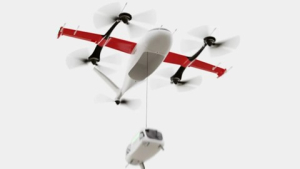
Photo by: Zipline
Introduction
In the realm of healthcare, innovation has consistently driven improvements in patient care, medical technology, and delivery systems. One such innovative solution making waves in the healthcare sector is Zipline. Zipline is a cutting-edge company that has harnessed drone technology to transform the way medical supplies are delivered, particularly in hard-to-reach and underserved areas. In this article, we will delve into the fascinating world of Zipline and explore how their unique approach is revolutionizing healthcare delivery on a global scale.
The Challenge of Access to Healthcare
Access to healthcare is a fundamental right, yet it remains a challenge for many communities worldwide, especially in remote or disaster-stricken regions. Traditional methods of delivering medical supplies often face obstacles such as inadequate infrastructure, challenging terrains, and lack of efficient transportation systems. These barriers can result in delayed or inadequate medical care, exacerbating health disparities and even costing lives.
Enter Zipline: Transforming Healthcare Delivery
Zipline, founded in 2014, set out with a bold vision: to create a delivery system that could bypass geographical barriers and deliver critical medical supplies in a swift and efficient manner. The company achieved this by utilizing drones—small, unmanned aerial vehicles—to deliver medical products such as blood, vaccines, and medications to healthcare facilities in remote areas.
How Zipline Works
Zipline’s innovative approach involves a carefully coordinated system. The company establishes distribution centers equipped with drones and the necessary medical supplies. Healthcare workers at remote clinics and hospitals can place orders via an app, and within minutes, a drone is dispatched to make the delivery.
The drones are designed to navigate challenging terrain and adverse weather conditions, ensuring that medical supplies reach their destination reliably. This approach significantly reduces delivery times compared to traditional methods and enables healthcare providers to respond more effectively to emergencies.
Key Benefits of Zipline
- Speed and Efficiency: Zipline’s drones can cover long distances in a fraction of the time it would take conventional transportation methods, ensuring timely delivery of critical medical supplies.
- Precision: The drones can land precisely at the designated healthcare facility’s drop zone, eliminating the need for complicated infrastructure or landing areas.
- Reduced Costs: By bypassing the need for building and maintaining extensive road networks, Zipline’s solution offers a cost-effective alternative for delivering medical supplies to remote areas.
- Improved Patient Outcomes: Swift access to medical supplies translates to improved patient care and outcomes, particularly in cases where timely intervention is critical.
- Data Collection: Zipline’s technology also enables the collection of valuable data regarding medical supply usage, demand patterns, and healthcare needs in underserved regions.
Global Impact
Zipline’s impact on global healthcare delivery has been profound. The company has partnered with governments and organizations in various countries, including Rwanda and Ghana, to establish drone distribution networks. These partnerships have facilitated faster response times during emergencies, increased vaccine coverage, and improved overall healthcare access. Zipline has delivered over 7.4 million items and made over 700,000 deliveries.
Challenges and Future Prospects
While Zipline’s approach holds immense promise, it also faces challenges. Regulatory hurdles, public acceptance of drone technology, and potential technical glitches are factors that need to be carefully navigated. However, as technology continues to advance and awareness grows, these challenges can be overcome.
As Zipline continues to expand its operations and refine its technology, it opens the door to a future where remote communities no longer face insurmountable obstacles to accessing essential medical care.
Conclusion
Zipline’s innovative use of drone technology has ushered in a new era of healthcare delivery, redefining how medical supplies reach remote and underserved areas. By bridging geographical gaps and speeding up the delivery of critical resources, Zipline is playing a pivotal role in saving lives and improving healthcare outcomes across the globe. As we look to the future, the continued growth of companies like Zipline promises a world where equitable healthcare access is no longer a distant dream, but a tangible reality.

